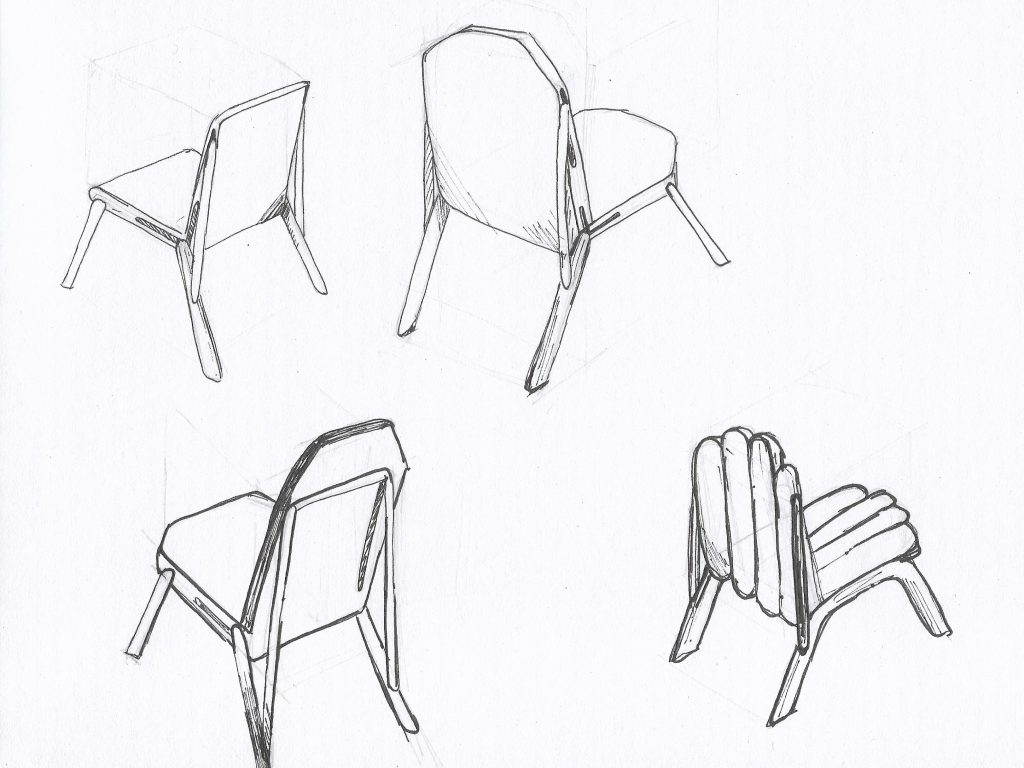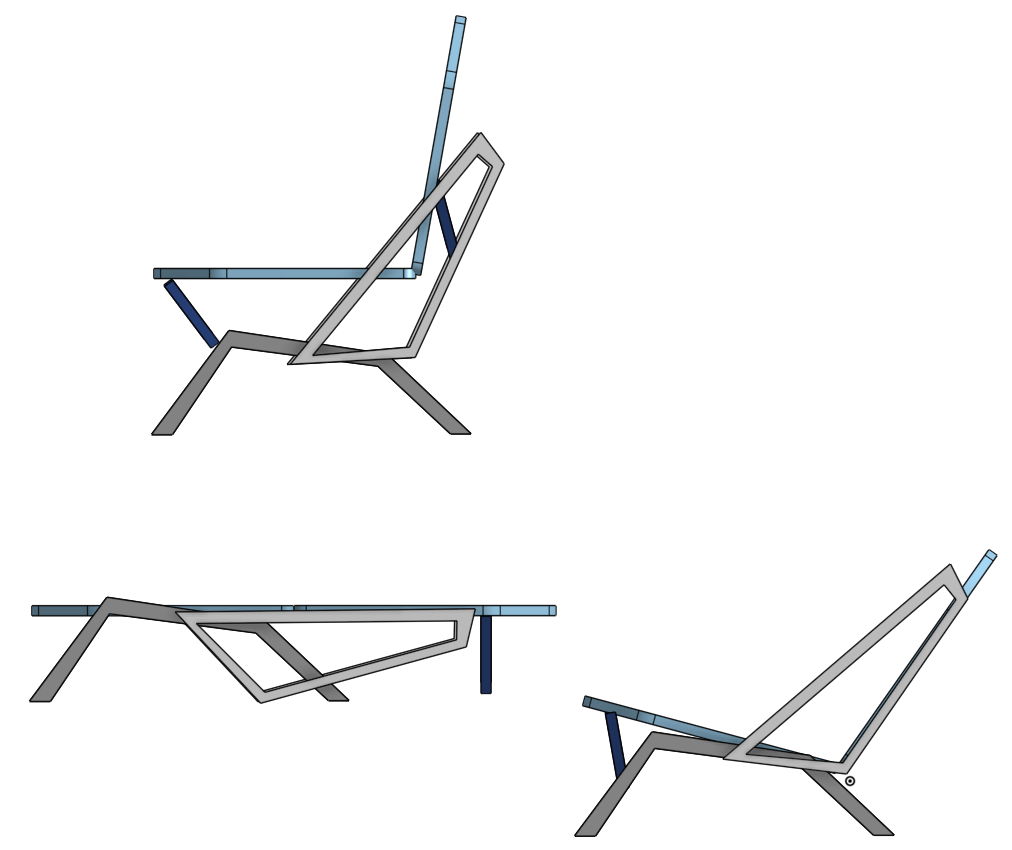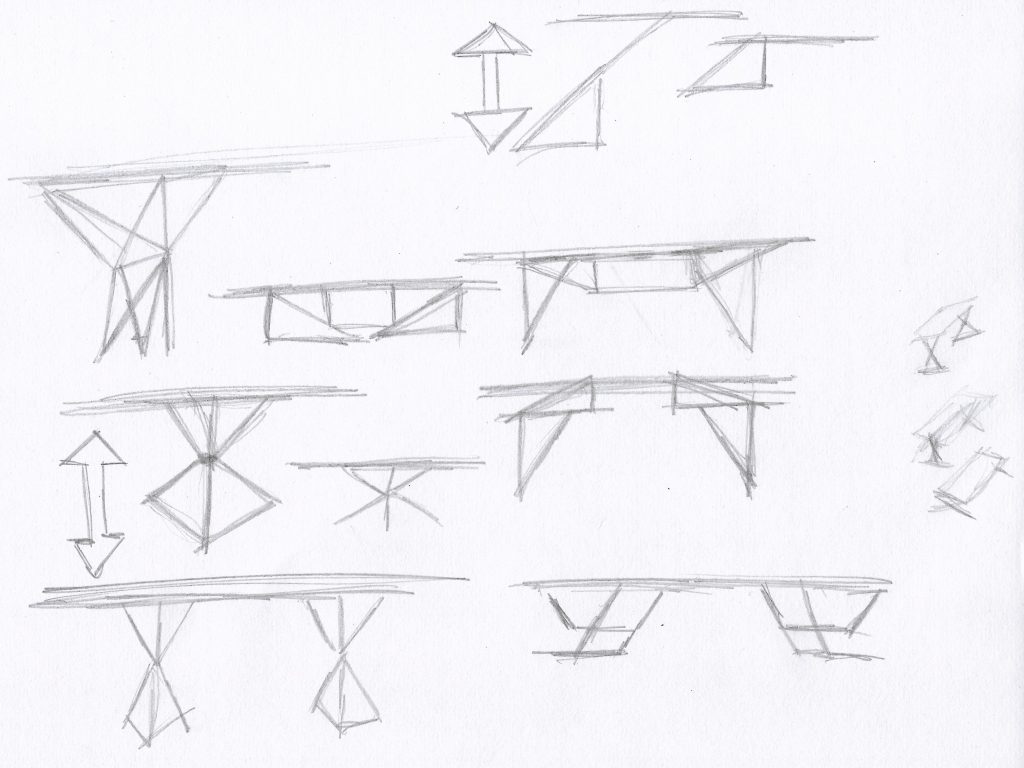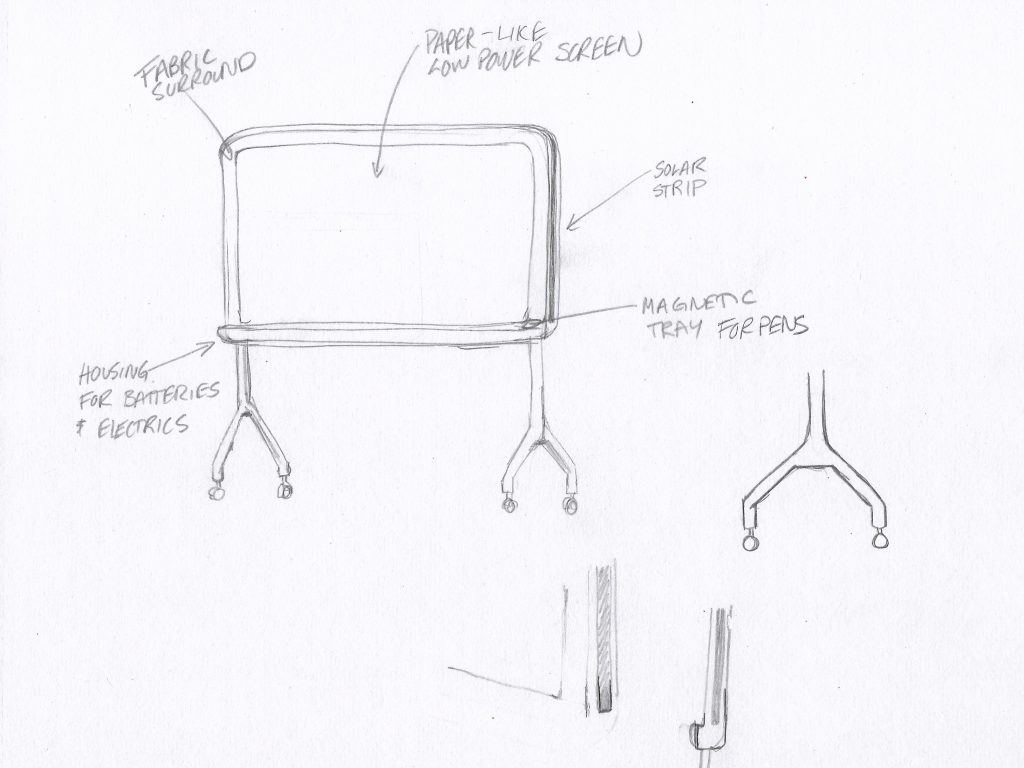After using a combination of experimental models, notes, and sketching (or more like doodles) I had found my direction; Stand, Task, Lounge. These main activities would be addressed with 3 products that worked together, consisting of; a transformable seat, adjustable table and a board.
Transformable Seat
Below are images from my sketchbook of workings for a transformable chair. The concept is for the seat to change from a 2 person bench to a lounge chair and then a task/standard height chair.
At this stage I was looking at a variety of factors, from aesthetics to functionality – how could I achieve this bench-to-chair movement? One of the challenges is that most adjustable lounge chairs (like a your common garden lounger) use the arms as a simple way of moving the back, this means however that you wouldn’t be able to sit on it sideways as a bench. Other tilting mechanisms used in standard office chairs don’t tilt completely flat, and would tip over if sat on. Finding a frame construction to support these functions will drive this design.
I also created cardboard and computer models shown below.
I would go onto show a selection of these ideas to Samantha (as a potential user). Read more about how our catch-ups went in my next post, and see further development in my chair development post.
Adjustable Table
Another product in my proposed product line will be an adjustable table, this will be designed to go from lounge height to standing and work with the other 2 products in different arrangements/ settings. Below are images of my sketchbook pages showing design options for this product.
One of the biggest challenges of the height adjustable table is the range, which is why a standard adjusting mechanism wouldn’t work. I used computer modelling to explore how my drawings would work using components. Completing this exercise, I realised that this idea wasn’t going to be an elegant or simple solution and decided to go in a different direction. Read more about my development of this mechanism in my table post.
Board
I also started to develop ideas for a board that would support Agile ways of working and work alongside the seat and table as a set of products. Below are images from my sketchbook where I explore different types of board options, including a white-tech screen. The concept would use similar technology to an e-reader and would work as partway between a smartboard and a low tech whiteboard.
Smart boards can be difficult to operate and learn to use, they also require a fixed power source and can be quite heavy. This board concept would use low power technology, and include a solar strip around the frame. This would allow for slow charge while unplugged, but can be plugged in to quick charge. The frame would hold a battery and basic electronic components. Users could save files of their working and be able to share with team members who are not in attendance of the meeting. The benefit of this would be that users could add to this basic file and then reload to the board for the next sprint review.
As the board wouldn’t support high tech video or imagery, it would be designed to replace the ‘sticky’ note activities, but mean that notes wouldn’t be lost, more easily shared, and paper wouldn’t need to be used – but you would still get all the great benefits of the ease of use of a low tech system.
This post relates to a project page, view the project page to see other related posts and outcomes.
Click Here to return to Journal Posts on Project Page
or click Next Post below to keep reading posts in this category































